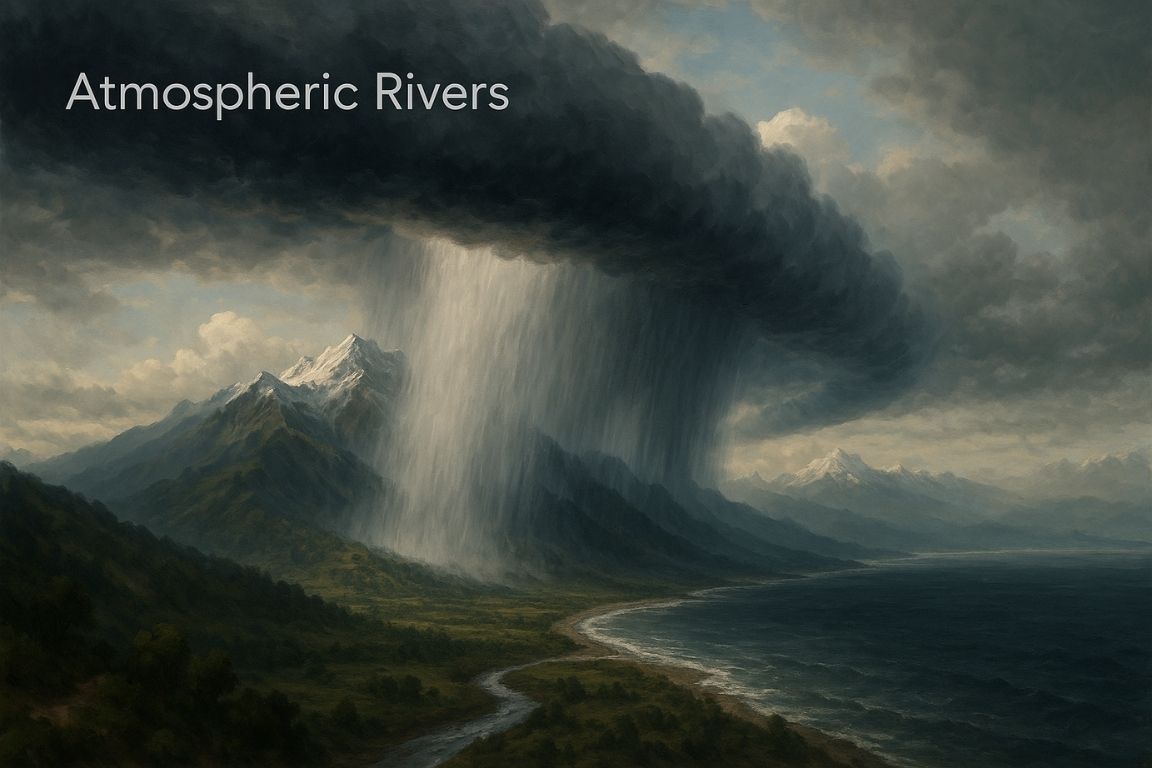Recent droughts and wildfires in South America have underlined the importance of “Flying Rivers” — moisture-laden air currents crucial for rainfall. Scientists warn that Amazon deforestation is disturbing these systems, worsening water scarcity across the region.
What are Atmospheric Rivers (ARs)?
- Long, narrow corridors in the atmosphere that transport large volumes of water vapour — often called “rivers in the sky.”
- Size: 2,000–5,000 km long, 400–500 km wide, and around 3 km deep.
- Function: Carry nearly 90% of water vapour across mid-latitudes, almost twice the Amazon River’s flow.
- Formation: Warm oceans cause evaporation → winds move moisture → vapour condenses into heavy rain or snow when it hits land or mountains.

Positive Aspects
- Supply 30–50% of annual rainfall in some regions.
- Help end droughts (e.g., U.S. West Coast).
Negative Aspects
- Responsible for 80% of flood damages** in the U.S. West Coast.
- Cause floods and landslides in Europe, Africa, South America, and Australia.
South America’s “Flying Rivers”
- Amazon forests release moisture forming flying rivers that bring rains to Peru, Bolivia, Ecuador.
- Deforestation disrupts this cycle → leads to droughts and ecosystem decline.
East Asia
- About 80% of heavy rainfall in China, Japan, Korea during early monsoon is due to ARs.
Climate Change Link
- Warming oceans intensify ARs, making them longer, wider, and more powerful.
- Raises risk of extreme rainfall and flood disasters.
Atmospheric Rivers in India
- Combine with cyclones and Himalayas, causing flash floods.
- Examples: Leh (2010), Kupwara (2011).
- Study (1951–2020): 574 AR events during monsoon; 80% of major floods linked to ARs.
- Warming Indian Ocean increases moisture, leading to intense short rains and landslides.
Conclusion
Atmospheric Rivers are vital for rainfall but can trigger severe floods. As climate change intensifies them, India and the world need better forecasting and climate-resilient planning to manage risks.





